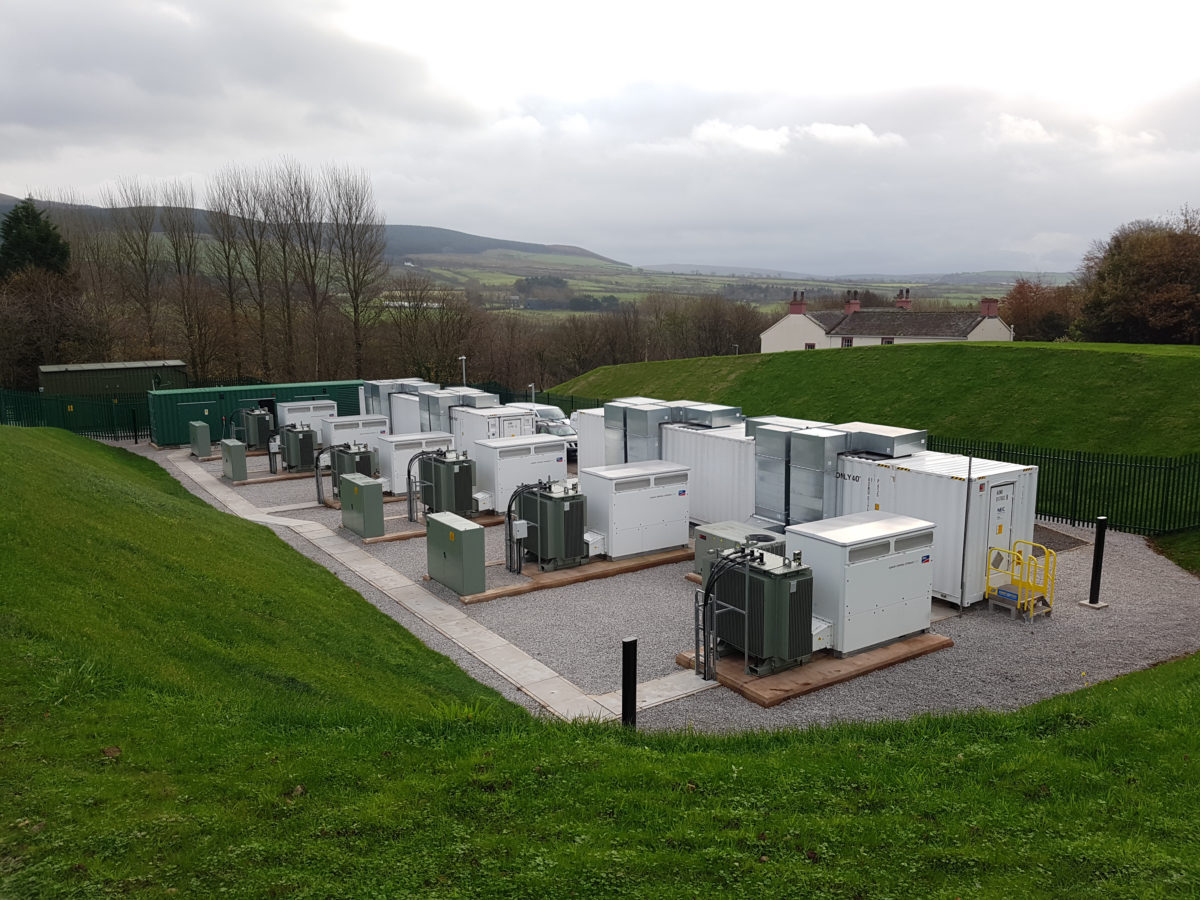NEC ES, a wholly-owned subsidiary of U.S. battery manufacturer, NEC Corporation, has completed the commissioning of its 50 MW U.K. energy storage project, which comprises two facilities: 40 MW in Glassenbury, Kent, and 10 MW in Cleator, Cumbria.
Both sites secured contracts with the national grid in August 2016 to provide U.K. system operators with enhanced frequency response through battery energy storage. Originally, they were expected to be grid connected last November.
NEC ES worked together with VLC Energy, a joint venture between Low Carbon, a renewable energy investment company, and VPI Immingham, owner of one of the largest combined heat and power plants in Europe, and part of the Vitol Group.
It provided turnkey engineering, procurement and construction (EPC), including its GSS turnkey solution, installation and commissioning, and 10 years of O&M services for each project.
Energy storage operation for Enhanced Frequency Response (EFR) will be handled by an automated operating mode, designed specifically for the U.K. frequency response service, and is part of NEC’s AEROS controls system.
Justin Thesiger, Operations Director at Low Carbon, said, “The two new battery parks at Glassenbury and Cleator will ensure stability within the local grid and that the electricity demands of residents can be consistently met, including at times of high demand. Sites such as these are fundamental to our energy security and also to realizing the full potential of renewable electricity generation that hit record levels earlier this year.”
UK storage
In November 2017, U.K. Solar Trade Association’s (STA) held an event in London, titled “Storage: Market Access and Systems Integration”.
It offered insight into the various forms and usages of energy storage projects, ranging from projects behind-the-meter (e.g. residential batteries), to those built purely for the ancillary services market (e.g. offering frequency response services), or projects co-located with existed or new renewable energy plants.
The solar PV industry is very keen on this last category, particularly after the recent commission of the U.K.’s first subsidy-free solar PV plant co-located with a battery storage facility.
In December, a report by report by the All-Party Parliamentary Group on Energy Storage, found the U.K. could have 12 GW of subsidy-free battery storage deployed nationwide by 2021, if the government can learn the lessons of the solar industry’s growth trajectory by carefully supporting policies and measures designed to deliver greater energy security to the country.
In October, meanwhile, the U.K. government’s business and energy secretary Greg Clark announced the launch of the Faraday Institution, which will oversee £65 million in investment into energy storage research over the next four years, as part of the country’s £246 million ($321 million) battery investment strategy.
At the Westminster Energy, Environment and Transport Forum (WEETF) conference, also held in London, last June, Adriana Laguna-Estopier, low carbon technologies manager at U.K. Power Networks, said the distributor network operator (DNO) had received 13 GW of energy storage connection applications, up from zero just a year ago.
Earlier in May, Western Power Distribution (WPD), another British DNO, said it had accepted 1.13 GW of battery storage capacity to connect in its network, and offered a further 1.1 GW to other applications.
This content is protected by copyright and may not be reused. If you want to cooperate with us and would like to reuse some of our content, please contact: editors@pv-magazine.com.




First of all, I really think it’s nice to hear there are so many investments and improvements going on concerning renewable energy generation and storage and it is even better magazines like PV Magazine help spread the word.
Unfortunately reading this post (and others), it really grinds my gears you express ‘energy storage’ in MW ( or Watts), since this is a unit of power.
Because of this, I think the content of this article decreases in value because a lot of questions still remain unanswered.
Is there any information known about the real capacity of ‘energy storage’, expressed in Watt-hours? (Like for how long can these battery systems deliver power at full or half capacity?)
Bram – couldn’t have agreed more with your comment – all energy storage projects need to report how much energy the store.
Otherwise it’s like selling 1 pint of beer as ‘can be drunk at a 10 pints a minute’.